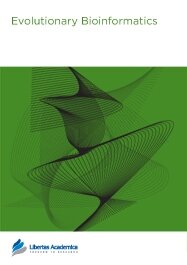

Publication Date: 21 May 2012
Type: Original Research
Journal: Evolutionary Bioinformatics
Citation: Evolutionary Bioinformatics 2012:8 219-227
doi: 10.4137/EBO.S9207

Background: Knowledge about Alburnoides remains lacking relative to many other species, resulting in a lack of a systematic position and taxonomic diagnosis. Basic biological information for Alburnoides has been constructed, and it is necessary to understand further and obtain more information about this species. Its phylogenetic relationships are still debated and no molecular data have been used to study this taxon in Iran. A holistic approach for genetic methods was adopted to analyze possible spirlin population differences at selected centers in the south Caspian Sea basin of Iran.
Methods: The phylogenetic relationships were determined based on 774 base pairs of the mitochondrial cytochrome b gene of 32 specimens of spirlin from nine locations in the south Caspian Sea drainage basin of Iran. The nucleotide sequences were subjected to phylogenetic analysis using the neighbor-joining, maximum parsimony, maximum likelihood, and Bayesian methods.
Results: The mitochondrial gene tree largely supports the existence of three major clades. The western populations (clade I) may be considered as Alburnoides eichwaldii, whereas the Talar river populations (clade II) are represented as Alburnoides sp.1 and the eastern populations (clade III) may be distinct taxa of Alburnoides sp.2.
Conclusion: This molecular evidence supports the hypothesis that A. bipunctatus does not exist in the south Caspian Sea basin of Iran, and that the western and eastern populations are distinct taxa.
PDF (1.28 MB PDF FORMAT)
RIS citation (ENDNOTE, REFERENCE MANAGER, PROCITE, REFWORKS)
BibTex citation (BIBDESK, LATEX)
XML
PMC HTML
The team at Evolutionary Bioinformatics were fantastic in everyway. They were very accessible and helped with all aspects of getting the paper published in a timely fashion. The immediate online help option available through the website is a great option.

All authors are surveyed after their articles are published. Authors are asked to rate their experience in a variety of areas, and their responses help us to monitor our performance. Presented here are their responses in some key areas. No 'poor' or 'very poor' responses were received; these are represented in the 'other' category.See Our Results
Copyright © 2013 Libertas Academica Ltd (except open access articles and accompanying metadata and supplementary files.)
Facebook Google+ Twitter
Pinterest Tumblr YouTube